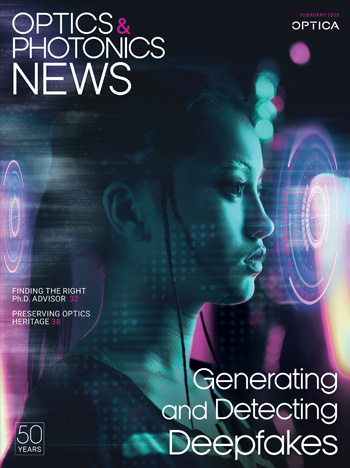
May 1990 Issue
Feature Articles
Compact blue laser devices
For the first several years of its existence, the laser was said to be a solution in search of a problem. Now, three decades after the demonstration of the first laser, practical applications are driving the development of new types of lasers. Several applications of current interest require compart sources of blue or green light. Optical data storage (where the short wavelength provides high storage density), undersea communications (where the blue light passes more easily through seawater), and large-screen displays (where blue and green are needed to make a full-color display) are a few examples of applications for which the development of small blue laser devices is considered important.
by William P. RiskDesigning a civilian DARPA
The Defense Research Projects Agency (DARPA) enjoys an enviable reputation as an elite band of non-bureaucrats, able to pick technological winners for the Defense Department and drive them forward by selectively targeted R&D funding. Why not, it has been asked, do the same on the civilian side of the economy? Over the years, more than a few bills have been introduced in Congress that would set up a civilian parallel to DARPA. Most have disappeared without much consideration, although in 1987 the Senate Governmental Affairs Committee reported draft legislation that would have created an Advanced Civilian Technology Agency explicitly modeled on DARPA. This bill—Congress's most serious flirtation with the idea of a civilian DARPA—was incorporated in the Senate's version of the 1988 omnibus trade act, to be later dropped in favor of a less ambitious alternative reported by the Committee on Commerce, Science, and Transportation. This second bill contributed the sections of the trade act that renamed the National Bureau of Standards and created a small Advanced Technology Program (ATP) within what is now the National Institute of Standards and Technology (NIST).
by John A. Alic and Dorothy RobynHeads Up Displays let you see down while looking up
A Heads-Up Display is one example of an optical device that does pretty interesting things in rather clever ways, yet is based on principles that a kid can understand. A Heads-Up Display (HUD) is essentially a system for displaying information such as aircraft speed to a pilot so that he can see it even when he's looking out the aircraft. If you're working with a youngster, you might let him or her sit in a car and notice that there are a lot of things on the dashboard, such as the speedometer, that a driver must look down to see. This means looking away from the traffic. The HUD allows the pilot to see his speed, altitude, and so on, even as he looks out the windshield.
by Janet ShieldsThe science behind optical standards writing
Writing optical standards may appear to be rather mundane work, but it is actually full of fundamental science, with plenty of real physics in what seems to be simply applied optics. This month we will illustrate some of the problems involved, using the roughness of optically polished surfaces as an example. The performance of most optical systems depends critically on the roughness or texture of the optical surface in the system. Surfaces that are not smooth enough can scatter light from bright, off axis sources into the image plane causing loss of resolution. Similarly, scattered light in laser cavities can cause wavelength drifts affecting laser gyro and isotope separation efficiencies. Surface roughness also leads to damage in high power laser systems.
by Robert E. Parks
![Illustration of a synapse in the brain. [Getty Images]](https://opnmedia.blob.core.windows.net/$web/opn/media/images/articles/2025/0425/departments/202504-cover-web.jpg?ext=.jpg)
![Fiber draped around a hand, demonstrating its flexibility. [Photo by Z. Wang and L. Wei]](https://opnmedia.blob.core.windows.net/$web/opn/media/images/articles/2025/0325/departments/202503-cover-web.jpg?ext=.jpg)
